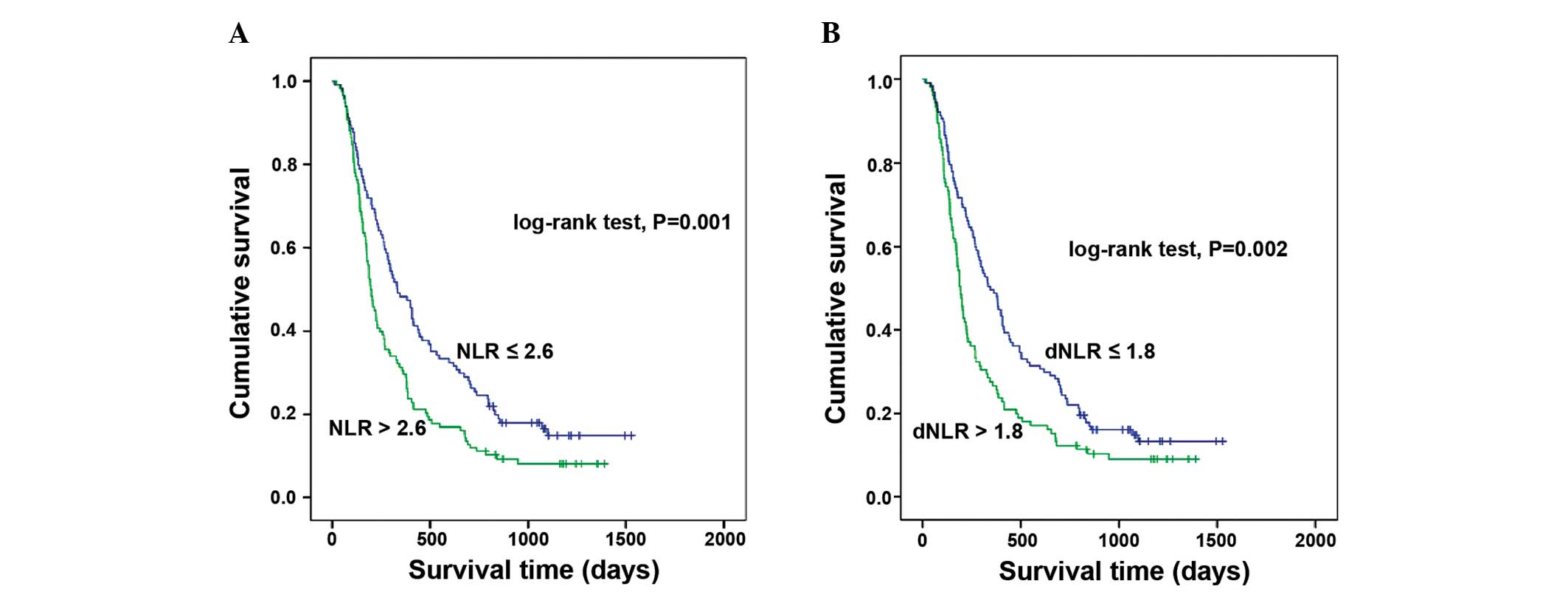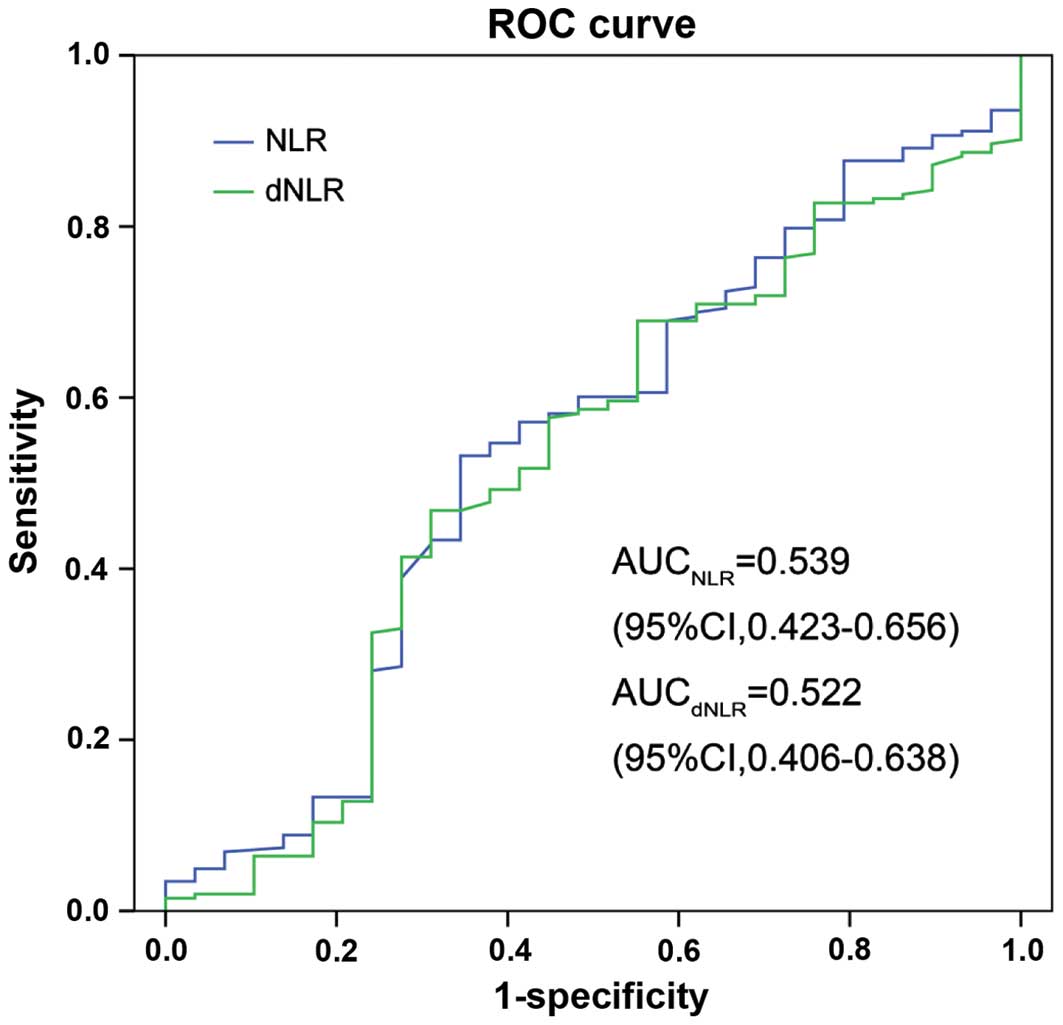|
1
|
Kamangar F, Dores GM and Anderson WF:
Patterns of cancer incidence, mortality and prevalence across five
continents: Defining priorities to reduce cancer disparities in
different geographic regions of the world. J Clin Oncol.
24:2137–2150. 2006. View Article : Google Scholar : PubMed/NCBI
|
|
2
|
Farazi PA and DePinho RA: Hepatocellular
carcinoma pathogenesis: From genes to environment. Nat Rev Cancer.
6:674–687. 2006. View
Article : Google Scholar : PubMed/NCBI
|
|
3
|
Chalasani N, Horlander JC Sr, Said A, Hoen
H, Kopecky KK, Stockberger SM Jr, Manam R, Kwo PY and Lumeng L:
Screening for hepatocellular carcinoma in patients with advanced
cirrhosis. Am J Gastroenterol. 94:2988–2993. 1999. View Article : Google Scholar : PubMed/NCBI
|
|
4
|
Tsukuma H, Hiyama T, Tanaka S, Nakao M,
Yabuuchi T, Kitamura T, Nakanishi K, Fujimoto I, Inoue A, Yamazaki
H, et al: Risk factors for hepatocellular carcinoma among patients
with chronic liver disease. N Engl J Med. 328:1797–1801. 1993.
View Article : Google Scholar : PubMed/NCBI
|
|
5
|
Saraswat VA, Pandey G and Shetty S:
Treatment algorithms for managing hepatocellular carcinoma. J Clin
Exp Hepatol. 4:S80–S89. 2014. View Article : Google Scholar : PubMed/NCBI
|
|
6
|
Llovet JM, Burroughs A and Bruix J:
Hepatocellular carcinoma. Lancet. 362:1907–1917. 2003. View Article : Google Scholar : PubMed/NCBI
|
|
7
|
Llovet JM and Bruix J: Systematic review
of randomized trials for unresectable hepatocellular carcinoma:
Chemoembolization improves survival. Hepatology. 37:429–442. 2003.
View Article : Google Scholar : PubMed/NCBI
|
|
8
|
Colotta F, Allavena P, Sica A, Garlanda C
and Mantovani A: Cancer-related inflammation, the seventh hallmark
of cancer: Links to genetic instability. Carcinogenesis.
30:1073–1081. 2009. View Article : Google Scholar : PubMed/NCBI
|
|
9
|
Hanahan D and Weinberg RA: Hallmarks of
cancer: The next generation. Cell. 144:646–674. 2011. View Article : Google Scholar : PubMed/NCBI
|
|
10
|
Forrest LM, McMillan DC, McArdle CS,
Angerson WJ, Dagg K and Scott HR: A prospective longitudinal study
of performance status, an inflammation-based score (GPS) and
survival in patients with inoperable non-small-cell lung cancer. Br
J Cancer. 92:1834–1836. 2005. View Article : Google Scholar : PubMed/NCBI
|
|
11
|
Hashimoto K, Ikeda Y, Korenaga D, Tanoue
K, Hamatake M, Kawasaki K, Yamaoka T, Iwatani Y, Akazawa K and
Takenaka K: The impact of preoperative serum C-reactive protein on
the prognosis of patients with hepatocellular carcinoma. Cancer.
103:1856–1864. 2005. View Article : Google Scholar : PubMed/NCBI
|
|
12
|
Ishizuka M, Kubota K, Kita J, Shimoda M,
Kato M and Sawada T: Usefulness of a modified inflammation-based
prognostic system for predicting postoperative mortality of
patients undergoing surgery for primary hepatocellular carcinoma. J
Surg Oncol. 103:801–806. 2011. View Article : Google Scholar : PubMed/NCBI
|
|
13
|
Kinoshita A, Onoda H, Imai N, Iwaku A,
Oishi M, Fushiya N, Koike K, Nishino H and Tajiri H: Comparison of
the prognostic value of inflammation-based prognostic scores in
patients with hepatocellular carcinoma. Br J Cancer. 107:988–993.
2012. View Article : Google Scholar : PubMed/NCBI
|
|
14
|
Gomez D, Farid S, Malik HZ, Young AL,
Toogood GJ, Lodge JP and Prasad KR: Preoperative
neutrophil-to-lymphocyte ratio as a prognostic predictor after
curative resection for hepatocellular carcinoma. World J Surg.
32:1757–1762. 2008. View Article : Google Scholar : PubMed/NCBI
|
|
15
|
Halazun KJ, Hardy MA, Rana AA, Woodland DC
IV, Luyten EJ, Mahadev S, Witkowski P, Siegel AB, Brown RS Jr and
Emond JC: Negative impact of neutrophil-lymphocyte ratio on outcome
after liver transplantation for hepatocellular carcinoma. Ann Surg.
250:141–151. 2009. View Article : Google Scholar : PubMed/NCBI
|
|
16
|
Huang ZL, Luo J, Chen MS, Li JQ and Shi M:
Blood neutrophil-to-lymphocyte ratio predicts survival in patients
with unresectable hepatocellular carcinoma undergoing transarterial
chemoembolization. J Vasc Interv Radiol. 22:702–709. 2011.
View Article : Google Scholar : PubMed/NCBI
|
|
17
|
Chen TM, Lin CC, Huang PT and Wen CF:
Neutrophil-to-lymphocyte ratio associated with mortality in early
hepatocellular carcinoma patients after radiofrequency ablation. J
Gastroenterol Hepatol. 27:553–561. 2012. View Article : Google Scholar : PubMed/NCBI
|
|
18
|
Pinato DJ, North BV and Sharma R: A novel,
externally validated inflammation-based prognostic algorithm in
hepatocellular carcinoma: The prognostic nutritional index (PNI).
Br J Cancer. 106:1439–1445. 2012. View Article : Google Scholar : PubMed/NCBI
|
|
19
|
Kasymjanova G, MacDonald N, Agulnik JS,
Cohen V, Pepe C, Kreisman H, Sharma R and Small D: The predictive
value of pre-treatment inflammatory markers in advanced
non-small-cell lung cancer. Curr Oncol. 17:52–58. 2010. View Article : Google Scholar : PubMed/NCBI
|
|
20
|
Smith RA, Bosonnet L, Raraty M, Sutton R,
Neoptolemos JP, Campbell F and Ghaneh P: Preoperative
platelet-lymphocyte ratio is an independent significant prognostic
marker in resected pancreatic ductal adenocarcinoma. Am J Surg.
197:466–472. 2009. View Article : Google Scholar : PubMed/NCBI
|
|
21
|
Proctor MJ, McMillan DC, Morrison DS,
Fletcher CD, Horgan PG and Clarke SJ: A derived neutrophil to
lymphocyte ratio predicts survival in patients with cancer. Br J
Cancer. 107:695–699. 2012. View Article : Google Scholar : PubMed/NCBI
|
|
22
|
Kusumanto YH, Dam WA, Hospers GA, Meijer C
and Mulder NH: Platelets and granulocytes, in particular the
neutrophils, form important compartments for circulating vascular
endothelial growth factor. Angiogenesis. 6:283–287. 2003.
View Article : Google Scholar : PubMed/NCBI
|
|
23
|
Chen MS, Li JQ, Zhang YQ, Lu LX, Zhang WZ,
Yuan YF, Guo YP, Lin XJ and Li GH: High-dose iodized oil
transcatheter arterial chemoembolization for patients with large
hepatocellular carcinoma. World J Gastroenterol. 8:74–78. 2002.
View Article : Google Scholar : PubMed/NCBI
|
|
24
|
Proctor MJ, Morrison DS, Talwar D, Balmer
SM, Fletcher CD, O'Reilly DS, Foulis AK, Horgan PG and McMillan DC:
A comparison of inflammation-based prognostic scores in patients
with cancer. A Glasgow Inflammation Outcome Study. Eur J Cancer.
47:2633–2641. 2011. View Article : Google Scholar : PubMed/NCBI
|
|
25
|
Dan J, Zhang Y, Peng Z, Huang J, Gao H, Xu
L and Chen M: Postoperative neutrophil-to-lymphocyte ratio change
predicts survival of patients with small hepatocellular carcinoma
undergoing radiofrequency ablation. PloS One. 8:e581842013.
View Article : Google Scholar : PubMed/NCBI
|
|
26
|
Mantovani A, Allavena P, Sica A and
Balkwill F: Cancer-related inflammation. Nature. 454:436–444. 2008.
View Article : Google Scholar : PubMed/NCBI
|
|
27
|
Coussens LM and Werb Z: Inflammation and
cancer. Nature. 420:860–867. 2002. View Article : Google Scholar : PubMed/NCBI
|
|
28
|
Ulich TR, del Castillo J, Keys M, Granger
GA and Ni RX: Kinetics and mechanisms of recombinant human
interleukin 1 and tumor necrosis factor-alpha-induced changes in
circulating numbers of neutrophils and lymphocytes. J Immunol.
139:3406–3415. 1987.PubMed/NCBI
|
|
29
|
Ulich TR, del Castillo J and Guo KZ: In
vivo hematologic effects of recombinant interleukin-6 on
hematopoiesis and circulating numbers of RBCs and WBCs. Blood.
73:108–110. 1989.PubMed/NCBI
|
|
30
|
Teramukai S, Kitano T, Kishida Y, Kawahara
M, Kubota K, Komuta K, Minato K, Mio T, Fujita Y, Yonei T, et al:
Pretreatment neutrophil count as an independent prognostic factor
in advanced non-small-cell lung cancer: An analysis of Japan
multinational trial organisation LC00-03. Eur J Cancer.
45:1950–1958. 2009. View Article : Google Scholar : PubMed/NCBI
|
|
31
|
Grivennikov SI, Greten FR and Karin M:
Immunity, inflammation and cancer. Cell. 140:883–899. 2010.
View Article : Google Scholar : PubMed/NCBI
|
|
32
|
Dunn GP, Old LJ and Schreiber RD: The
immunobiology of cancer immunosurveillance and immunoediting.
Immunity. 21:137–148. 2004. View Article : Google Scholar : PubMed/NCBI
|
|
33
|
Dunn GP, Ikeda H, Bruce AT, Koebel C,
Uppaluri R, Bui J, Chan R, Diamond M, White JM, Sheehan KC and
Schreiber RD: Interferon-gamma and cancer immunoediting. Immunol
Res. 32:231–245. 2005. View Article : Google Scholar : PubMed/NCBI
|
|
34
|
Rabinowich H, Cohen R, Bruderman I,
Steiner Z and Klajman A: Functional analysis of mononuclear cells
infiltrating into tumors: Lysis of autologous human tumor cells by
cultured infiltrating lymphocytes. Cancer Res. 47:173–177.
1987.PubMed/NCBI
|
|
35
|
Hoffmann TK, Dworacki G, Tsukihiro T,
Meidenbauer N, Gooding W, Johnson JT and Whiteside TL: Spontaneous
apoptosis of circulating T lymphocytes in patients with head and
neck cancer and its clinical importance. Clin Cancer Res.
8:2553–2562. 2002.PubMed/NCBI
|
|
36
|
Schmidt H, Bastholt L, Geertsen P,
Christensen IJ, Larsen S, Gehl J and von der Maase H: Elevated
neutrophil and monocyte counts in peripheral blood are associated
with poor survival in patients with metastatic melanoma: A
prognostic model. Br J Cancer. 93:273–278. 2005. View Article : Google Scholar : PubMed/NCBI
|
|
37
|
Cho H and Kim JH: Multiplication of
neutrophil and monocyte counts (MNM) as an easily obtainable tumour
marker for cervical cancer. Biomarkers. 14:161–170. 2009.
View Article : Google Scholar : PubMed/NCBI
|
|
38
|
Millrud CR, Kvarnhammar Månsson A, Uddman
R, Björnsson S, Riesbeck K and Cardell LO: The activation pattern
of blood leukocytes in head and neck squamous cell carcinoma is
correlated to survival. PloS One. 7:e511202012. View Article : Google Scholar : PubMed/NCBI
|
|
39
|
Leitch EF, Chakrabarti M, Crozier JE,
McKee RF, Anderson JH, Horgan PG and McMillan DC: Comparison of the
prognostic value of selected markers of the systemic inflammatory
response in patients with colorectal cancer. Br J Cancer.
97:1266–1270. 2007. View Article : Google Scholar : PubMed/NCBI
|
|
40
|
Hernaez R, Yeh HC, Lazo M, Chung HM,
Hamilton JP, Koteish A, Potter JJ, Brancati FL and Clark JM:
Elevated ALT and GGT predict all-cause mortality and hepatocellular
carcinoma in Taiwanese male: A case-cohort study. Hepatol Int.
7:1040–1049. 2013. View Article : Google Scholar : PubMed/NCBI
|
|
41
|
Tarao K, Rino Y, Takemiya S, Tamai S,
Ohkawa S, Sugimasa Y, Miyakawa K, Morinaga S, Yoshida M, Shibuya A,
et al: Close association between high serum ALT and more rapid
recurrence of hepatocellular carcinoma in hepatectomized patients
with HCV-associated liver cirrhosis and hepatocellular carcinoma.
Intervirology. 43:20–26. 2000. View Article : Google Scholar : PubMed/NCBI
|
|
42
|
El-Serag HB, Kramer JR, Chen GJ, Duan Z,
Richardson PA and Davila JA: Effectiveness of AFP and ultrasound
tests on hepatocellular carcinoma mortality in HCV-infected
patients in the USA. Gut. 60:992–997. 2011. View Article : Google Scholar : PubMed/NCBI
|
|
43
|
Giannini E, Botta F, Fasoli A, Ceppa P,
Risso D, Lantieri PB, Celle G and Testa R: Progressive liver
functional impairment is associated with an increase in AST/ALT
ratio. Dig Dis Sci. 44:1249–1253. 1999. View Article : Google Scholar : PubMed/NCBI
|
|
44
|
Giannini E, Risso D, Botta F, Chiarbonello
B, Fasoli A, Malfatti F, Romagnoli P, Testa E, Ceppa P and Testa R:
Validity and clinical utility of the aspartate
aminotransferase-alanine aminotransferase ratio in assessing
disease severity and prognosis in patients with hepatitis C
virus-related chronic liver disease. Arch Intern Med. 163:218–224.
2003. View Article : Google Scholar : PubMed/NCBI
|
|
45
|
Carr BI, Guerra V, Giannini EG, Farinati
F, Ciccarese F, Rapaccini GL, Di Marco M, Benvegnù L, Zoli M,
Borzio F, et al: Significance of platelet and AFP levels and liver
function parameters for HCC size and survival. Int J Biol Markers.
29:e215–e223. 2014.PubMed/NCBI
|
















